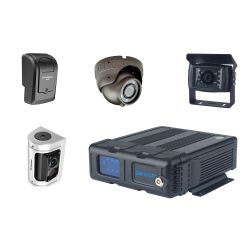How Insurance Companies Can — And Should — Use Telematics Data
November 15, 2021
For many insurance providers, dash cam telematics are becoming helpful at providing more data about a commercial fleet and its operations. These data sets can be especially useful during the claims process as well as determining coverage options. Since all of the data and video footage is recorded and stored on a cloud-based platform, it is easy to access and determine liability when disputing false claims or tickets.
At Zenduit, we stay on top of IoT developments to keep you and your fleet informed. Previously, we posted about the impact of dash cams on your insurance premiums, but there are other ways in which telematics data can impact the insurance industry — and your bottom line.
Pay-as-you-go
Telematics was first used for auto insurance in Canada in 2013, and has since grown to be a comprehensive part of many insurers’ offerings. Insurance telematics is gathered by a small wireless device installed in a truck’s diagnostic port (typically under the steering wheel). The device acts as a hub for information and communications between itself and the vehicle, linking to a web portal or mobile app so drivers can keep track of their mileage; drivers are then sent a warning when they near the end of a 1,000-kilometre increment.
For example, the Canadian Automobile Association (CAA) introduced the MyPace program in 2018. With this model, one would pay in advance for a daily base premium, starting with an initial 1,000 kilometres. You would also pay any additional charges in accordance with how much you drive. A telematics device in the vehicle, or an app on your mobile device, tallies the kilometres the car travels.
Pay-how-you-drive
The CAA device only tracks distances, unlike other devices that can monitor and track driving behaviours such as harsh braking or speeding. These programs are known as pay-how-you-drive. In this instance, telematics would track driving behaviour on the road, either via an app on your mobile device or a device installed in the vehicle that uses a combination of GPS technology and on-board diagnostics, and then transmits that information to an insurance provider.
Some insurance companies even allow you to track your fleet’s driving habits and savings online, with an online information dashboard that updates in real-time and provides your telematics discounts on a monthly cadence.
The benefits of insurance telematics
Insurance telematics, also referred to as usage-based insurance (UBI) telematics, has created a massive shift in determining an organization’s premiums and how insurance is assigned to your fleet.
Telematics data can customize your insurance premiums based on your fleet’s driving patterns; It monitors your drivers’ behaviours on the road in real-time and offers an objective, holistic picture of your fleet.
Some insurance companies use telematics data to observe specific risk or behaviours associated with driving a commercial vehicle, including:
- When and how your drivers accelerate and/or brake
- The time of day when you are on the road
- The distance driven by your vehicles
A telematics device creates a personalized profile of your fleet based on specific, predetermined criteria. If driving habits are improved, your company can potentially save on insurance premiums. Dash cam footage and telematics data can work in tandem with your insurance broker to solve for the following:
- Exonerating your drivers in the event of a collision
- Fighting insurance fraud
- Providing evidence in the event of a false claim or ticket
- Monitoring the status of vehicles to ensure they’re in proper working order and running efficiently
- Improving driving behaviour
When you consider the ease with which insurance telematics can potentially track your fleet’s driving habits and positively impact your premiums, it’s confusing as to why more insurance companies don’t have the same offerings, or why the technology hasn’t been mandated across the entire industry.
Currently, telematics programs are only offered in Alberta, Nova Scotia, New Brunswick, Ontario, P.E.I. and Quebec. In addition, telematics are not available for certain types of vehicles, including electric or diesel trucks, or vehicles made before 2005.
The good news is that the number of insurers offering telematics is expected to go up as Canadian insurance providers are learning from the examples set by American and European insurance companies.
According to the Victoria Transport Policy Institute, the adoption of telematics programs has more potential benefits, including reductions in:
- Road infrastructure and parking costs
- Air pollution
- City congestion
- Traffic accidents
- Energy use
In 2012, the Insurance Bureau of Canada (IBC) conducted a survey in Ontario that resulted in a largely favourable view of telematics. The entire bulletin can be found here.
Regardless of the size of your fleet, telematics tools can help protect your drivers and your business by positively impacting insurance. The right telematics platform can offer cutting-edge, real-time visibility into your vehicles’ inner and outer workings while they’re on the road. To learn more about how fleets can leverage their data, contact us today.










